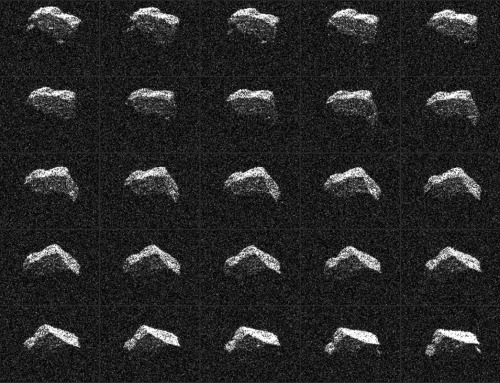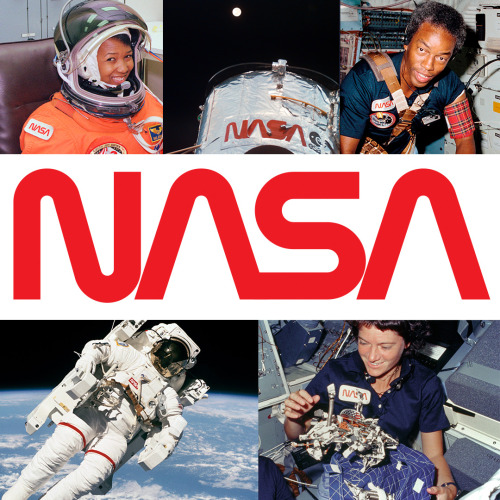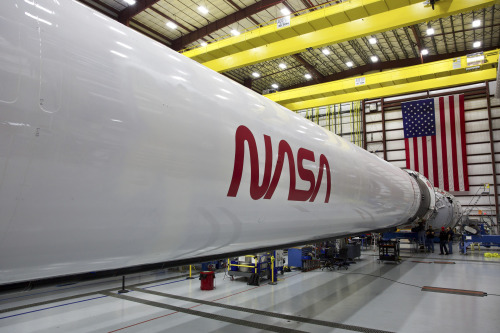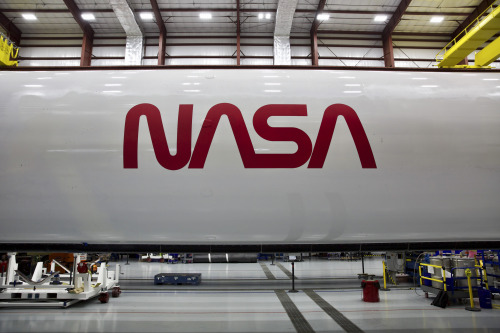Say Hello To The Saturn Nebula 👋

Say hello to the Saturn Nebula 👋
Garden-variety stars like the Sun live fairly placid lives in their galactic neighborhoods, casually churning out heat and light for billions of years. When these stars reach retirement age, however, they transform into unique and often psychedelic works of art. This Hubble Space Telescope image of the Saturn Nebula shows the result, called a planetary nebula. While it looks like a piece of wrapped cosmic candy, what we see is actually the outer layers of a dying star.
Stars are powered by nuclear fusion, but each one comes with a limited supply of fuel. When a medium-mass star exhausts its nuclear fuel, it will swell up and shrug off its outer layers until only a small, hot core remains. The leftover core, called a white dwarf, is a lot like a hot coal that glows after a barbecue — eventually it will fade out. Until then, the gaseous debris fluoresces as it expands out into the cosmos, possibly destined to be recycled into later generations of stars and planets.
Using Hubble’s observations, scientists have characterized the nebula’s composition, structure, temperature and the way it interacts with surrounding material. Studying planetary nebulas is particularly interesting since our Sun will experience a similar fate around five billion years down the road.
Make sure to follow us on Tumblr for your regular dose of space: http://nasa.tumblr.com.
More Posts from Nasa and Others
That’s a wrap! Thank you for all the great questions.
Keep up with Nick’s journey on and off the station by following him on Twitter at @AstroHague. Follow NASA on Tumblr for your regular dose of space!
out of all the roles you've had in the past, which one do you feel has best prepared you to be a flight director?

Say hello to globular cluster 47 Tucanae 👋
This glittery spray of ancient stars is about 16,700 light-years away from Earth toward the constellation Tucana. Globular clusters like this one are isolated star cities, home to hundreds of thousands of stars that are held together by their mutual gravity. And like the fast pace of cities, there's plenty of action in these stellar metropolises. The stars are in constant motion, orbiting around the cluster's center.
Past observations have shown that the heavyweight stars tend to crowd into the “downtown” core area, while lightweight stars reside in the less populated suburbs. But as heavyweight stars age, they rapidly lose mass, cool down and shut off their nuclear furnaces. After the purge, only the stars' bright, superhot cores – called white dwarfs – remain. This weight loss program causes the now lighter-weight white dwarfs to be nudged out of the downtown area through gravitational interactions with heftier stars.
Until these Hubble observations, astronomers had never seen the dynamic conveyor belt in action. The Hubble results reveal young white dwarfs amid their leisurely 40-million-year exodus from the bustling center of the cluster.
Make sure to follow us on Tumblr for your regular dose of space: http://nasa.tumblr.com.
Protecting our Home Planet 🌎

Did you ever wonder how we spots asteroids that may be getting too close to Earth for comfort? Wonder no more. Our Planetary Defense Coordination Office does just that. Thanks to a variety of ground and space based telescopes, we’re able to detect potentially hazardous objects so we can prepare for the unlikely threat against our planet.
What is a near-Earth object?

Near-Earth objects (NEOs) are asteroids and comets that orbit the Sun, but their orbits bring them into Earth’s neighborhood – within 30 million miles of Earth’s orbit.
These objects are relatively unchanged remnant debris from the solar system’s formation some 4.6 billion years ago. Most of the rocky asteroids originally formed in the warmer inner solar system between the orbits of Mars and Jupiter, while comets, composed mostly of water ice with embedded dust particles, formed in the cold outer solar system.
Who searches for near-Earth objects?

Our Near-Earth Object (NEO) Observations Program finds, tracks and monitors near-Earth asteroids and comets. Astronomers supported by the program use telescopes to follow up the discoveries to make additional measurements, as do many observatories all over the world. The Center for Near-Earth Object Studies, based at our Jet Propulsion Laboratory, also uses these data to calculate high-precision orbits for all known near-Earth objects and predict future close approaches by them to Earth, as well as the potential for any future impacts.
How do we calculate the orbit of a near-Earth object?

Scientists determine the orbit of an asteroid by comparing measurements of its position as it moves across the sky to the predictions of a computer model of its orbit around the Sun. The more observations that are used and the longer the period over which those observations are made, the more accurate the calculated orbit and the predictions that can be made from it.
How many near-Earth objects have been discovered so far?

At the start of 2019, the number of discovered NEOs totaled more than 19,000, and it has since surpassed 20,000. An average of 30 new discoveries are added each week. More than 95 percent of these objects were discovered by NASA-funded surveys since 1998, when we initially established its NEO Observations Program and began tracking and cataloguing them.
Currently the risk of an asteroid striking Earth is exceedingly low, but we are constantly monitoring our cosmic neighborhood. Have more questions? Visit our Planetary Defense page to explore how we keep track of near-Earth objects.
Make sure to follow us on Tumblr for your regular dose of space: http://nasa.tumblr.com.

Hello everyone. This is NASA astronaut Peggy Whitson ready to answer your questions about being an astronaut, mission training, and what it’s like to live in space.
Have a question for me? Ask it here, then watch the answers here.
We Found the Perfect Spot to Land our Moon Rover

After an extensive selection process, we chose the mountainous area west of Nobile Crater at the Moon’s South Pole as the landing site for our first-ever robotic Moon rover. The Volatiles Investigating Polar Exploration Rover, or VIPER, will explore the Moon’s surface and subsurface in search of water and other resources beginning in late 2023. Thanks to past missions, such as satellites orbiting the Moon or impacting its surface, we know there is ice at the Moon’s poles. But how much? And where did it come from? VIPER aims to answer these questions and more by venturing into shadowed craters and visiting other areas of scientific interest over its 100-day mission. The findings will inform future landing sites under the Artemis program and help pave the way toward establishing a long-term human presence on the Moon. Here are five things to know:
The landing site is located just outside the western rim of Nobile Crater at the Moon’s South Pole.

The region has suitable lighting and terrain for our solar-powered rover to navigate.

VIPER will travel up to 15 miles in search of water and other resources.

Its traverse will change depending on what it finds, but it could look like this.

Drivers on Earth will tell the rover where to explore during its 100-day mission.

The VIPER mission is managed by our Ames Research Center in California's Silicon Valley. The approximately 1,000-pound rover will be delivered to the Moon by a commercial vendor as part of our Commercial Lunar Payload Services initiative, delivering science and technology payloads to and near the Moon.
Make sure to follow us on Tumblr for your regular dose of space.
Our Eyes in the Sky See Toxic Waters
Warm summer temperatures often lead to dangerous blooms of phytoplankton in lakes, reservoirs and along our coastlines. These toxin-containing aquatic organisms can sicken people and pets, contaminate drinking water, and force closures at boating and swimming sites.

In this image, a severe bloom of toxic blue-green algae is spreading across the western half of Lake Erie. Taken on July 30, 2019 by the Operational Land Imager on our Landsat 8 satellite, this image shows green patches where the bloom was most dense and where toxicity levels were unsafe for recreational activities. Around the time of this image, the bloom covered about 300 square miles of Lake Erie’s surface, roughly the size of New York City. By August 13, the bloom had doubled to more than 620 square miles. That’s eight times the size of Cleveland.

The dominant organism—a Microcystis cyanobacteria—produces the toxin microcystin, can cause liver damage, numbness, dizziness, and vomiting. On July 29, 2019, the National Oceanic Atmospheric Administration (NOAA) reported unsafe toxin concentrations in Lake Erie and have since advised people (and their pets) to stay away from areas where scum is forming on the water surface.
You can stay informed about harmful algal blooms using a new mobile app that will send you alerts on potentially harmful algal blooms in your area. Called CyAN, it's based on NASA satellite data of the color changes in lakes and other bodies of water. It serves as our eye-in-the-sky early warning system, alerting the public and local officials to when dangerous waters may be in bloom.
Make sure to follow us on Tumblr for your regular dose of space: http://nasa.tumblr.com.



Retro. Modern. Iconic. That’s the worm.
#TheWormIsBack
Our beloved symbol of exploration will fly once again, just in time to mark the return of human spaceflight on American rockets from American soil. The retired logo is making its comeback on on SpaceX’s Falcon 9 rocket that will take flight later this year when we #LaunchAmerica once again.
The NASA insignia, or "meatball," seen in our profile image, was quite difficult to reproduce with 1970s technology. In 1975, enter the sleek, simple design you see above! The world knew it as “the worm.” For a period of time we were able to thrive with both the worm and the meatball. However, in 1992, the 1970s brand was retired - except on clothing and other souvenir items - in favor of the original late 1950s graphic.
Image Credit: NASA/SpaceX
Make sure to follow us on Tumblr for your regular dose of space: http://nasa.tumblr.com.
Distance: Hazard Far From Home
A human journey to Mars, at first glance, offers an inexhaustible amount of complexities. To bring a mission to the Red Planet from fiction to fact, our Human Research Program has organized some of the hazards astronauts will encounter on a continual basis into five classifications.

The third and perhaps most apparent hazard is, quite simply, the distance.


Rather than a three-day lunar trip, astronauts would be leaving our planet for roughly three years. Facing a communication delay of up to 20 minutes one way and the possibility of equipment failures or a medical emergency, astronauts must be capable of confronting an array of situations without support from their fellow team on Earth.

Once you burn your engines for Mars, there is no turning back so planning and self-sufficiency are essential keys to a successful Martian mission. The Human Research Program is studying and improving food formulation, processing, packaging and preservation systems.


While International Space Station expeditions serve as a rough foundation for the expected impact on planning logistics for such a trip, the data isn’t always comparable, but it is a key to the solution.

Exploration to the Moon and Mars will expose astronauts to five known hazards of spaceflight, including distance from Earth. To learn more, and find out what our Human Research Program is doing to protect humans in space, check out the "Hazards of Human Spaceflight" website. Or, check out this week’s episode of “Houston We Have a Podcast,” in which host Gary Jordan further dives into the threat of distance with Erik Antonsen, the Assistant Director for Human Systems Risk Management at the Johnson Space Center.

Make sure to follow us on Tumblr for your regular dose of space: http://nasa.tumblr.com.

Say hello to the Jewel Box Cluster 👋
This Hubble Space Telescope image shows a young, open star cluster known as NGC 4755 or the Jewel Box. Just like old school friends that drift apart after graduation, the stars in open clusters only remain together for a limited time. They disperse into space over the course of a few hundred million years, pulled away by the gravitational tugs of other passing clusters and clouds of gas.
The Jewel Box is a spartan collection of just over 100 stars. The cluster is about 6,500 light-years away from Earth, which means that the light we see from it today was emitted before the Great Pyramids in Egypt were built.
Head outside and you can see it for yourself! The Jewel Box is visible to the naked eye, but will masquerade as a single star. Grab a pair of binoculars if you want to see more of the cluster’s sparkling stellar population. It is located in the southern constellation of the cross (Crux).
Make sure to follow us on Tumblr for your regular dose of space: http://nasa.tumblr.com.
-
 anngaar liked this · 1 year ago
anngaar liked this · 1 year ago -
 pwurrz reblogged this · 1 year ago
pwurrz reblogged this · 1 year ago -
 lobohuntsrelentlessly liked this · 1 year ago
lobohuntsrelentlessly liked this · 1 year ago -
 ur-local-ehooker reblogged this · 2 years ago
ur-local-ehooker reblogged this · 2 years ago -
 ur-local-ehooker liked this · 2 years ago
ur-local-ehooker liked this · 2 years ago -
 love-drunk-coma-puddle reblogged this · 2 years ago
love-drunk-coma-puddle reblogged this · 2 years ago -
 notaschuyler liked this · 2 years ago
notaschuyler liked this · 2 years ago -
 what-do-life-is liked this · 2 years ago
what-do-life-is liked this · 2 years ago -
 ramzankhan5 liked this · 3 years ago
ramzankhan5 liked this · 3 years ago -
 kingvk reblogged this · 3 years ago
kingvk reblogged this · 3 years ago -
 souless6 liked this · 3 years ago
souless6 liked this · 3 years ago -
 medwsa reblogged this · 4 years ago
medwsa reblogged this · 4 years ago -
 medwsa liked this · 4 years ago
medwsa liked this · 4 years ago -
 coco-cookie9 liked this · 4 years ago
coco-cookie9 liked this · 4 years ago -
 king-minyard reblogged this · 4 years ago
king-minyard reblogged this · 4 years ago -
 king-minyard liked this · 4 years ago
king-minyard liked this · 4 years ago -
 improvisant reblogged this · 4 years ago
improvisant reblogged this · 4 years ago -
 av4ad0re liked this · 4 years ago
av4ad0re liked this · 4 years ago -
 localdeadgirl1999 liked this · 4 years ago
localdeadgirl1999 liked this · 4 years ago -
 carly-rae-jean liked this · 4 years ago
carly-rae-jean liked this · 4 years ago -
 infamousperception liked this · 4 years ago
infamousperception liked this · 4 years ago -
 absinthiion liked this · 4 years ago
absinthiion liked this · 4 years ago -
 sunshine-for-the-soul reblogged this · 4 years ago
sunshine-for-the-soul reblogged this · 4 years ago -
 hoshi-no-ryuu liked this · 5 years ago
hoshi-no-ryuu liked this · 5 years ago -
 cosmicnightbringer reblogged this · 5 years ago
cosmicnightbringer reblogged this · 5 years ago -
 majikal-malmuerto reblogged this · 5 years ago
majikal-malmuerto reblogged this · 5 years ago -
 meanderingandrambling reblogged this · 5 years ago
meanderingandrambling reblogged this · 5 years ago -
 meanderingandrambling liked this · 5 years ago
meanderingandrambling liked this · 5 years ago -
 rainghuleh liked this · 5 years ago
rainghuleh liked this · 5 years ago -
 papushon liked this · 5 years ago
papushon liked this · 5 years ago -
 snailswithwings reblogged this · 5 years ago
snailswithwings reblogged this · 5 years ago -
 mrblunt19 liked this · 5 years ago
mrblunt19 liked this · 5 years ago
Explore the universe and discover our home planet with the official NASA Tumblr account
1K posts